When it comes to cross-country moving, the thought of transporting delicate items can be daunting. After all, your prized dinnerware deserves the utmost care. Our comprehensive guide on how to pack china for moving offers invaluable tips and techniques, ensuring that your cherished pieces reach their destination unscathed. Dive in to make your relocation experience seamless and worry-free.
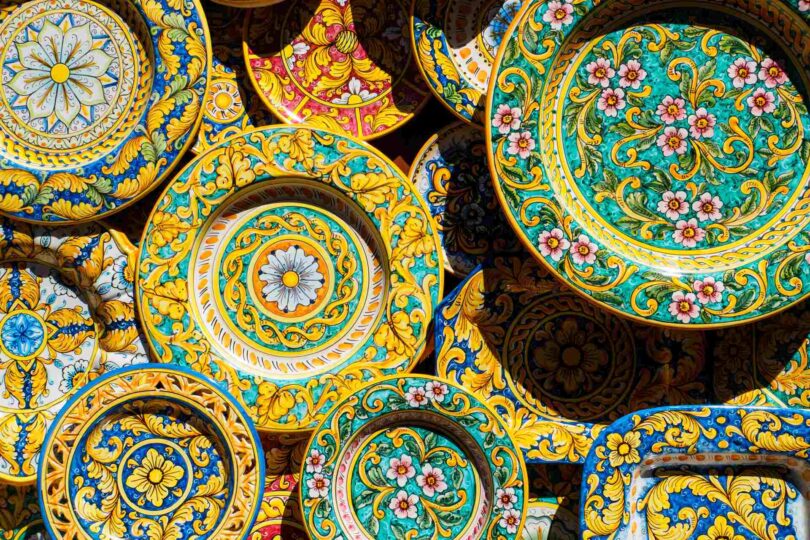

When packing china for a move, start by assessing your collection and gathering the necessary supplies. Individually wrap each piece in packing paper and bubble wrap, securing it with tape. Place cardboard dividers or foam separators inside the boxes and create a cushioning layer at the bottom of the box. Carefully box up the wrapped china, with heavier items at the bottom and lighter pieces on top. Insert additional packing material between items and on top to prevent movement. Label the boxes appropriately and seal them with tape. If the entire process seems overwhelming, consider seeking assistance from reputable cross-country movers.
The best way to pack china when relocating to another state begins long before the actual move. A well-organized boxing-up approach can make all the difference between an easy transition and heartbreak over shattered heirlooms. Before diving into the boxing-up process, take a moment to truly understand the treasures within your collection.
Sort through each piece, and keep items of significant monetary value or sentimental importance. Some might be age-old antiques that can never be replaced, while others could be more contemporary and easily substituted.
Before you wrap anything, inspect each piece for any existing damage or cracks. This step is crucial, as packing a piece that’s already compromised can lead to further damage during the move. Make a note of any flawed items, and consider whether it’s worth the risk of moving them or if it might be time to retire those pieces and get rid of them responsibly.
Furthermore, if you uncover fine china dishes you’re considering parting with, there are retailers such as Replacements Ltd., antique shops, or auction houses that might be interested in acquiring them. This could be a chance to declutter or even fetch a good price for items you no longer wish to keep, allowing you to save some money for your relocation.
Proper and efficient boxing-up experience is vital for the success of your relocation, and having the right packing materials on hand is the first step. Here’s a list of different packing materials you’ll need to safeguard your china:
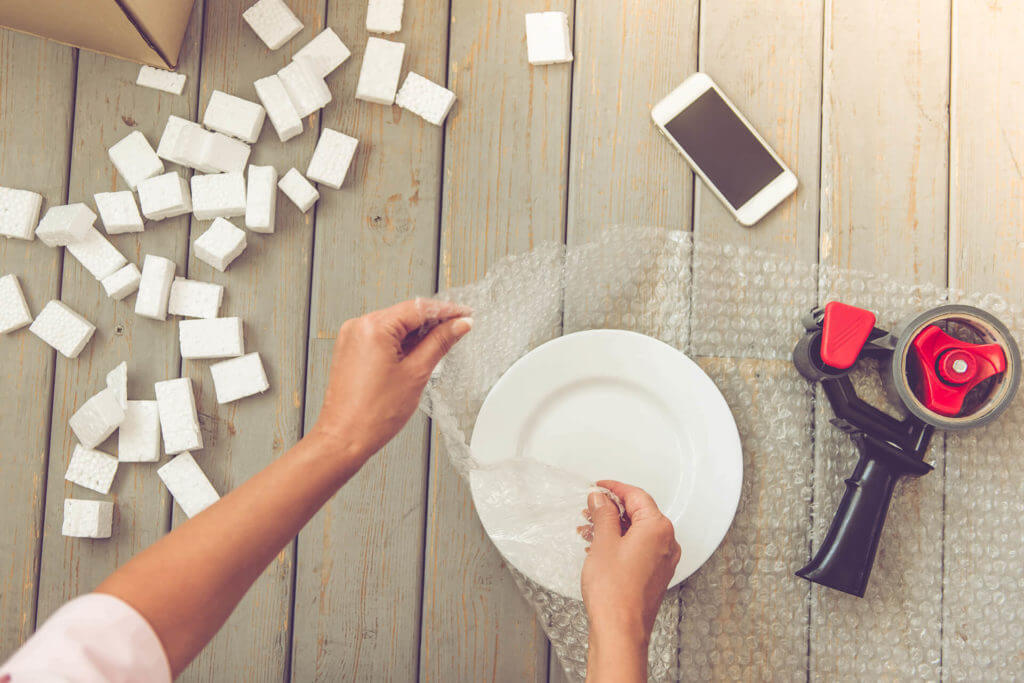
Ensuring the safety of your precious dinnerware during transportation requires meticulous planning and the right materials. Whether it’s a cherished heirloom or a newly acquired set, safeguarding these delicate pieces is paramount. Let’s delve into the essentials that will help protect your dinnerware during transportation.
Specialized china packing boxes, often referred to as dish packs, are designed to accommodate and protect delicate items. These reinforced containers provide added protection compared to standard cardboard crates. The compartments within allow each piece of dinnerware to have its separate space, minimizing the risk of collision and breakage.
Securing your valuable porcelain requires more than just a sturdy box. Delicate items benefit from layers of protection. Bubble wrap is perfect for providing a shock-absorbing shield around each piece.
Additionally, soft tissue paper can be used to wrap individual items, preventing surface scratches and ensuring items don’t rub against each other. For extra padding, consider using soft cloths or towels, which can be nestled around the items for added cushion.
In the chaos of relocation, boxes can swiftly get shuffled or mistreated. Proper tagging and utilizing stickers can significantly streamline the process. It aids in swift item identification and ensures those maneuvering the boxes are aware of the delicate contents within.
Utilize vivid, conspicuous stickers to denote your crates with “Fragile” alerts. Additionally, arrows indicating “This Side Up” can prevent mishandling. Moreover, tags detailing the contents can facilitate a seamless and orderly unpacking phase.
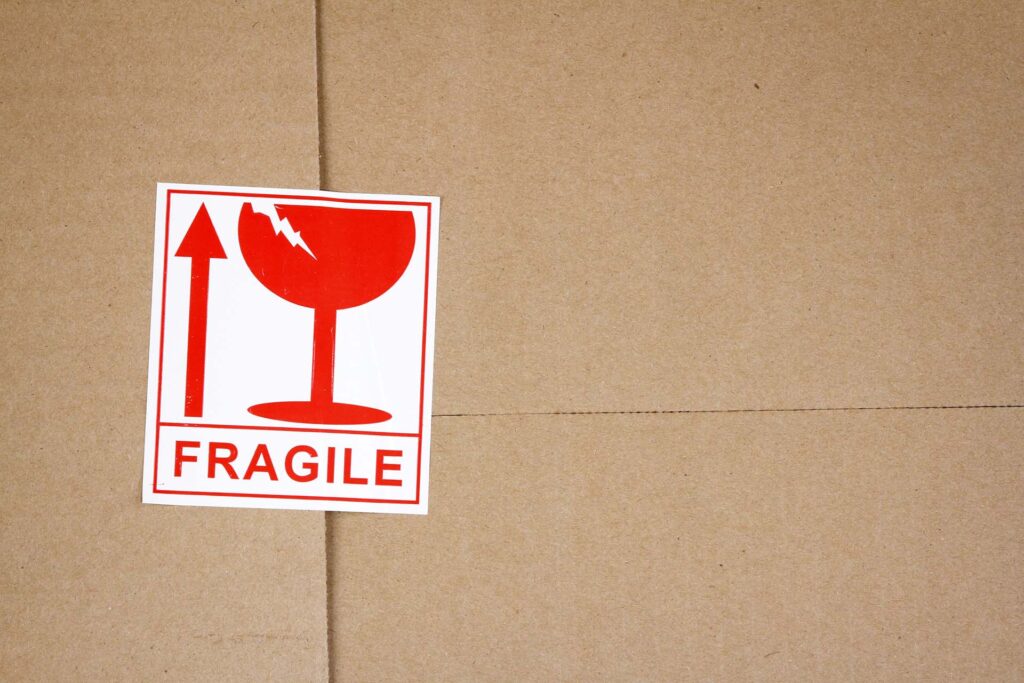
Transporting delicate dinnerware demands precision and care. Adhering to a methodical approach can be pivotal in ensuring the safe transition of your collection without unwanted mishaps. Let’s explore how you can ensure your plates arrive intact.
Begin by laying out a large piece of bubble wrap or packing paper on a flat surface. Place an object in the center and fold the wrap or paper over it, ensuring the entire plate is covered. For added protection, consider using multiple layers, especially for extremely delicate or valuable pieces.
Check the video below for tips on how to wrap and ship your valuable dishes without them getting broken in the process.
Once individual plates are wrapped, it’s time to place them in the designated containers. Avoid placing them flat inside the box. Instead, stack them vertically, similar to how you’d place records on a shelf. This orientation reduces pressure on individual plates.
Between each plate, insert layers of padding, such as foam sheets or cushioned dividers, to prevent them from rubbing against each other. Always ensure there’s ample padding at the bottom and top of the box.
After placing all the plates inside, fill any remaining spaces with crumpled paper or foam peanuts to prevent movement. Once you’re confident about the internal cushioning, close the box and seal it tightly with strong adhesive tape. For identification and proper handling, label the container as “Fragile” and specify the contents, such as “Delicate Dinnerware” or “Fine Plates,” to assist with careful handling during the move.
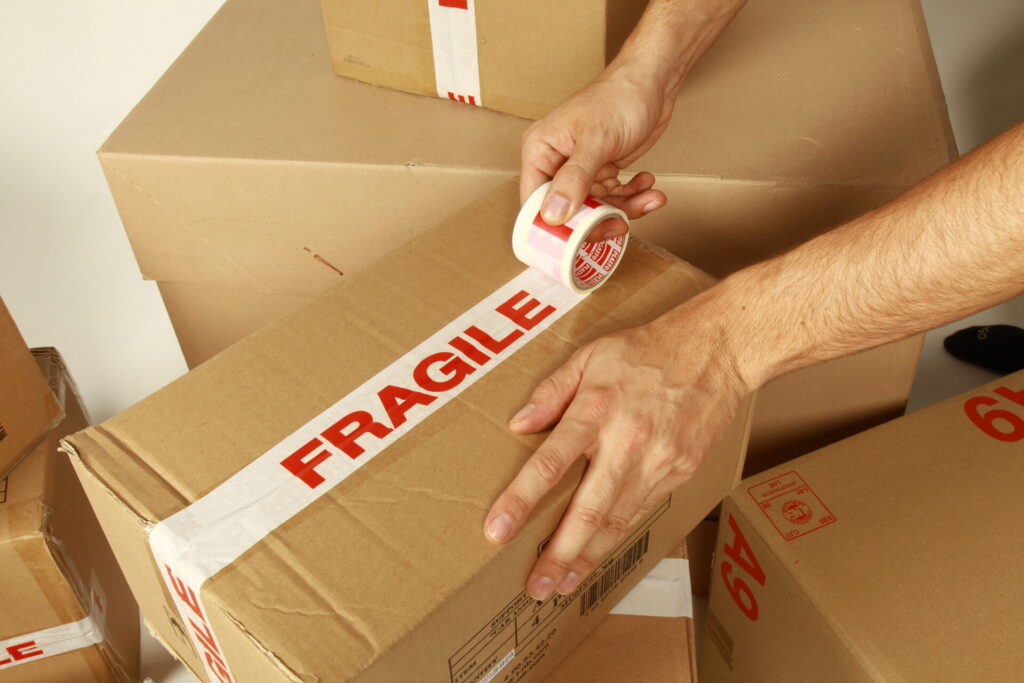
Ensuring the safe transit of your cherished porcelain items, such as bowls and teacups, requires a touch of finesse and attention to detail. However, be aware that different shapes and sizes demand specific handling and techniques. Here’s a guide to help you navigate the complexities of relocating these delicate things.
Every porcelain piece is unique. For bowls, place them on a flat surface covered in soft paper or bubble wrap. Start from one edge, rolling and tucking as you go until the bowl is fully enveloped. Cups necessitate careful handling as well.
Start by padding the interior, then proceed to envelop the entire cup in protective material, securing the edges with tape to ensure it remains wrapped. For irregularly shaped items, adapt your wrapping method, ensuring all protrusions and indentations are well-covered.
When placing porcelain items in containers, it’s not just about wrapping. The arrangement is the actual key point. Dividers are invaluable for creating separate spaces for each item, particularly for cups and mugs. Spacers, made of foam or cushioned material, ensure that even if items shift, they won’t collide with each other, reducing the risk of chipping or breakage.
Handles on teacups or lids on teapots are especially vulnerable. When wrapping these items, give extra padding to these delicate areas. Consider using smaller pieces of bubble wrap or foam to bolster protection. Remember, these intricate parts are often the first to break in a mishap, so investing time in their protection is crucial to preserving your collection’s integrity.
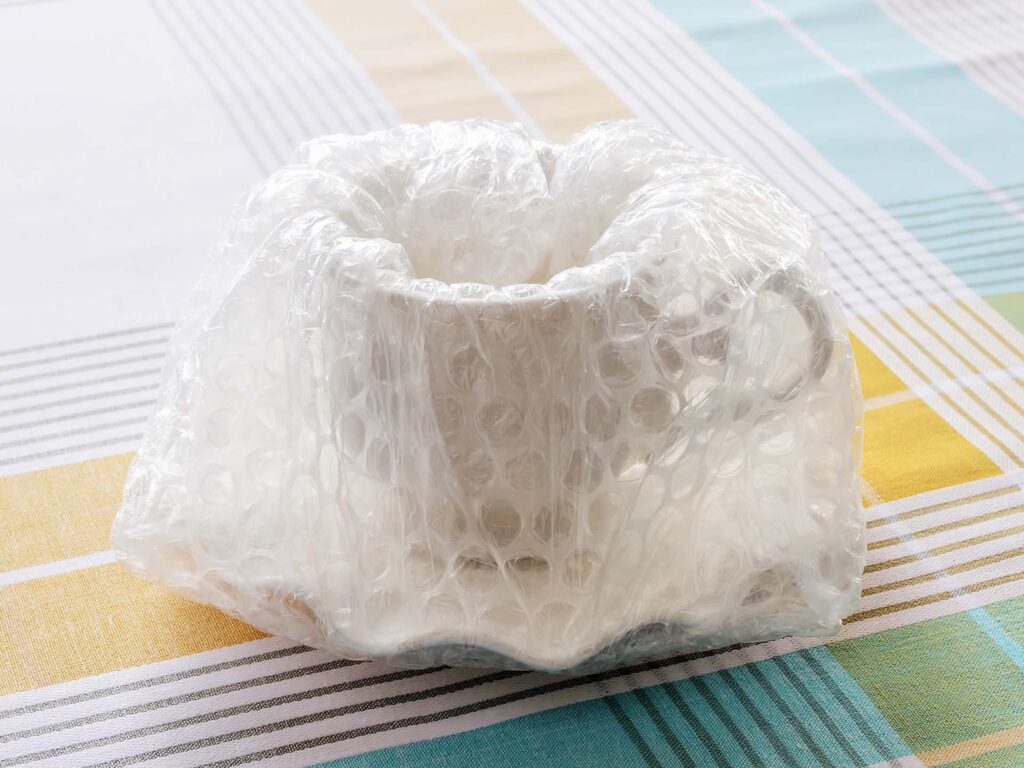
Antique and distinctive porcelain items often hold not just monetary value but sentimental significance as well. Safeguarding these treasures throughout transit requires added precautions and steps to ensure they remain in pristine condition.
Every piece of antique or unique dinnerware deserves individual attention. Due to their age or distinctiveness, they might be more susceptible to damage. When handling, always use a gentle touch, avoiding any rushed movements. These pieces may benefit from double wrapping or being placed in individual boxes surrounded by ample cushioning, ensuring they remain undisturbed throughout transit.
Given the irreplaceable nature of antique and unique items, it’s wise to consider insuring them. Start by documenting each piece. This includes taking clear photographs from multiple angles and noting any existing imperfections.
Acquiring an appraisal can be beneficial for determining the value of your items. Once you have a clear understanding of your collection’s worth, consider getting a suitable insurance policy to cover potential losses or damages during the relocation.
For those especially concerned about their prized porcelain’s well-being, it might be worthwhile to consult with professional movers who specialize in transporting antiques. Their expertise, coupled with specialized equipment and materials, can provide an added layer of security. They can offer guidance, techniques, and even hands-on assistance, ensuring your cherished items reach their destination unscathed.

When loading these crates onto a relocation truck, position containers in a spot where they won’t be crushed or jostled excessively, preferably away from heavy or large items. Moreover, it might be wise to keep these boxes separate from general household items, perhaps even in the car’s cabin if feasible.
Ensure boxes containing delicate dinnerware are placed upright. If using a relocation vehicle, it can be beneficial to position these boxes closer to the vehicle’s cab where there’s less motion. Secure them to prevent any movement during the drive.
Once at your destination, resist the urge to rush the unpacking process. Take your time, handling each piece gently as you remove it from its protective wrapping.
As you unpack, inspect each item for any possible damage that might have occurred during the transit. By doing this systematically, you can ensure that any issues are identified immediately, which can be crucial if insurance claims are needed.
After the stress of the move, your porcelain items might need a bit of refreshing. Clean each piece gently using mild detergents and soft cloths, avoiding abrasive materials that might scratch their surface. Once cleaned, store them in a secure and stable environment, preferably in a display cabinet or on cushioned shelves, ensuring they remain in pristine condition.
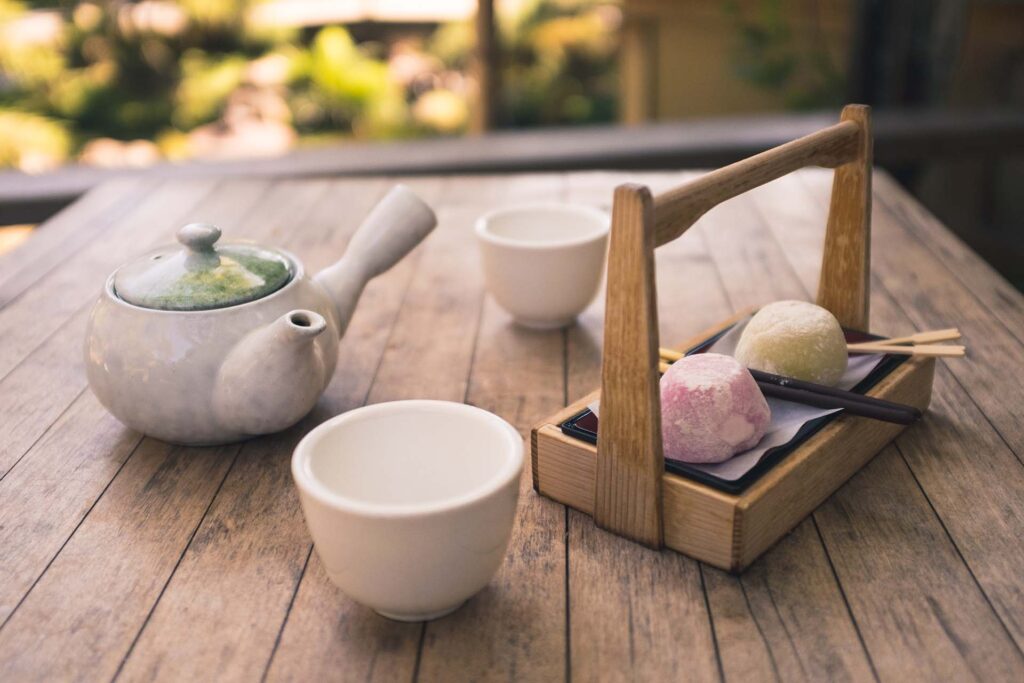
If you don’t want to bother with wrapping and securing delicate china at all, hiring a professional relocation crew is the best way to ensure the items’ safe transport. At Trico Long Distance Movers, we understand the intricacies of relocating valuable possessions, especially when the journey spans vast distances. Our long-distance moving services are crafted with precision and care, ensuring your belongings are shipped to their destination securely.
We pride ourselves on offering specialized packing services, where our skilled team uses advanced techniques to handle items of all shapes and sizes, ensuring their safety. Moreover, we recognize the inherent risks involved in long-distance relocations, which is why our insurance coverage is both comprehensive and accommodating. By entrusting us with your relocation to a new home, you’re ensuring a smooth and stress-free relocation.
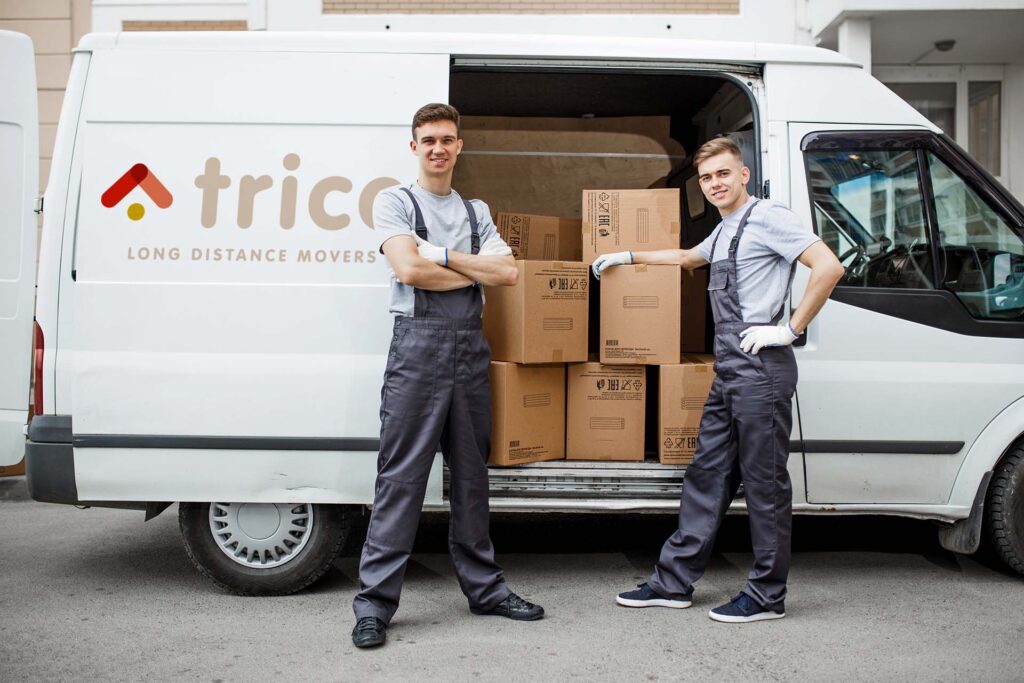
Your collection, filled with memories and sentimental value, deserves nothing but the utmost care during relocation. At Trico Long Distance Movers, we don’t just transport items, we transport memories. Every plate, cup, and bowl carries a story, and we’re committed to conserving that narrative and relocating them safely.
Should you wish to learn more about our dedicated services and how we can assist in preserving your cherished collection, don’t hesitate to contact us today. Our team stands ready to ensure your memories continue to shine brightly in their new home.
While newspaper is readily available, it’s not the ideal material for wrapping delicate items like porcelain. The ink can transfer onto the items, and it might not offer enough cushioning. Consider using clean packing paper or bubble wrap for better protection.
Dish packs or specialized porcelain containers are best. These boxes are sturdier and designed to handle the weight and fragility of dinnerware items.
Heirloom porcelain should be handled with utmost care. Consider double wrapping such items and placing them in individual boxes. Adding a personal touch, like a note detailing the item’s history, can also be meaningful.
Absolutely. Given the value and fragility of porcelain, it’s wise to get insurance coverage. This ensures compensation in case of unexpected damages during transit.
To prevent chipping, ensure there’s ample padding between each porcelain piece and that there’s no room for movement inside the box. Dividers or foam can be used to separate items.
Certainly! Many long-distance moving companies offer specialized services tailored for delicate items like porcelain. It’s worth consulting them for expert guidance.
Unpack the porcelain slowly, removing padding layer by layer. Ensure you’re working on a flat, stable surface, and always inspect each piece for any unnoticed damages as you unpack.
The number of items you can fit in a single container depends on the box’s size and the porcelain pieces themselves. However, it’s essential not to overpack. Typically, for a standard dish pack, packing 8-12 plates or bowls with ample padding in between is advisable. Always prioritize safety over quantity.